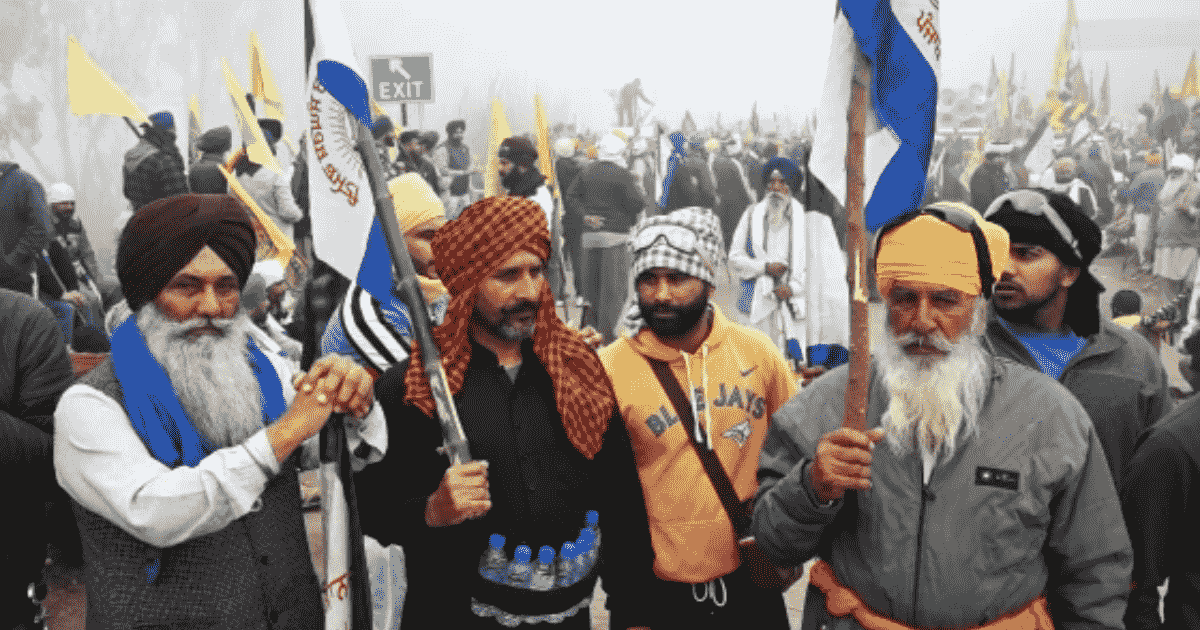
In a dramatic turn of events, police officers in India deployed tear gas on Wednesday to disperse protesting farmers who were resuming their march to the capital. Despite being equipped with cranes and excavators, the farmers faced resistance after talks with the government regarding guaranteed prices for their produce reached an impasse.
Report By – B. Vidyanand
Tear Gas Use Causes and Motto
The protest stems from the farmers’ demand for higher prices, supported by legal backing, for their crops. Primarily hailing from the northern state of Punjab, these farmers represent a crucial voting bloc that Prime Minister Narendra Modi cannot afford to alienate, especially with general elections looming in the coming months. The authorities had previously halted their march by erecting barricades, leading to a renewed standoff.
Details of the Incident
In their endeavor to proceed with a peaceful march, the farmers encountered a formidable obstacle in the form of massive barricades that barred their path. Faced with this obstruction, the police resorted to the use of tear gas as a means of dispersal. In response to the acrid clouds of gas, thousands of farmers, displaying resilience and precaution, adorned themselves with medical masks. Seeking refuge from the stinging effects of the tear gas, they found solace in the nearby fields surrounding their gathering point along the highway, approximately 125 miles north of New Delhi.
Amidst this tense situation, the government, under the leadership of Prime Minister Narendra Modi, extended a fresh offer to resume talks with the protesting farmers. Emphasizing the paramount importance of maintaining peace, the government’s call for dialogue indicated a willingness to address the concerns raised by the farmers. This dynamic development underscores the intricate balance between civic expression and governmental response, setting the stage for potential negotiations to quell the escalating tensions.
Tear Gas
Agriculture Minister Arjun Munda, in a conciliatory move, extended a sincere invitation for dialogue, underscoring the government’s preparedness to engage in comprehensive discussions addressing all pertinent issues, with a specific focus on the contentious matter of guaranteed prices for agricultural produce. This gesture aimed to foster an open and constructive conversation to find common ground between the government and the protesting farmers.
Despite this invitation, the farmers, resolute in their objectives, had previously rejected a government proposal. The offer included provisions for five-year contracts and guaranteed support prices for crops such as corn, cotton, and pulses. Despite the comprehensiveness of the proposal, the farmers remained steadfast in their demand for higher prices supported by the sanctity of law. This underscores the depth of their conviction and the complexity of finding a mutually acceptable resolution that aligns with the interests of both the farming community and the government. The impasse sets the stage for a continued struggle as both parties navigate the intricate terrain of negotiations.
FAQs:
- Why are the farmers protesting?
The farmers are protesting for higher prices for their crops, supported by legal provisions.
- What led to the police using tear gas?
The police deployed tear gas when the farmers attempted to resume their march after talks with the government failed.
- What is the government’s stance on the issue?
The government, led by Prime Minister Modi, has expressed willingness to resume talks and address the farmers’ concerns.
- Why did the farmers reject the government’s previous proposal?
The farmers rejected the proposal for five-year contracts and guaranteed support prices, insisting on additional food grains being covered.
- How did similar protests two years ago impact the government?
Similar protests two years ago forced Modi’s government to repeal a set of farm laws, showcasing the impact of farmer movements on government decisions.
In summary, the persistent protests unfolding on the agricultural front serve as a stark reminder of the intricate interplay between agricultural policy, political dynamics, and the unwavering determination of the farmers to improve their livelihood conditions. This ongoing saga underscores the pivotal crossroads where policy decisions, political considerations, and the grassroots demands of the farming community converge.
The utilization of tear gas in response to the protests emphasizes the heightened intensity of the standoff between the farmers and the authorities. This confrontation sheds light on the formidable challenges faced by both parties as they grapple with finding a mutually agreeable resolution. The clash reflects the broader struggle for understanding and meeting the diverse needs of the farming community, which plays a vital role in shaping the nation’s agricultural landscape.
As the protests continue to unfold, the next few days are poised to be crucial in determining the trajectory of this farmer-led movement. The evolving events will offer insights into whether both sides can navigate through the complexities and reach a resolution that addresses the concerns of the farmers while upholding broader policy objectives. For the latest updates on this dynamic situation, stay tuned to Trenditweetz.





